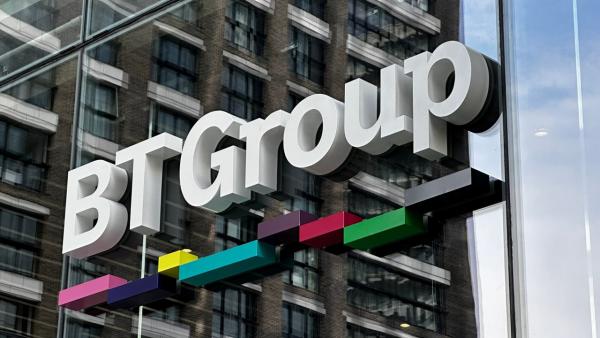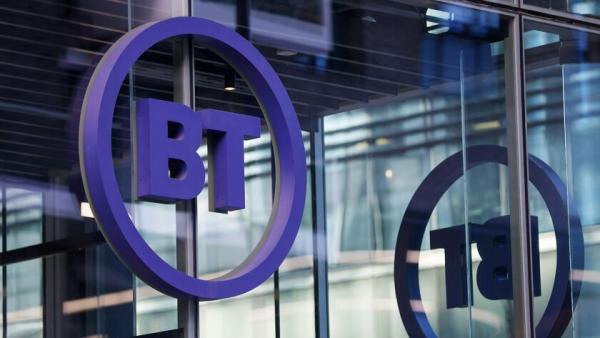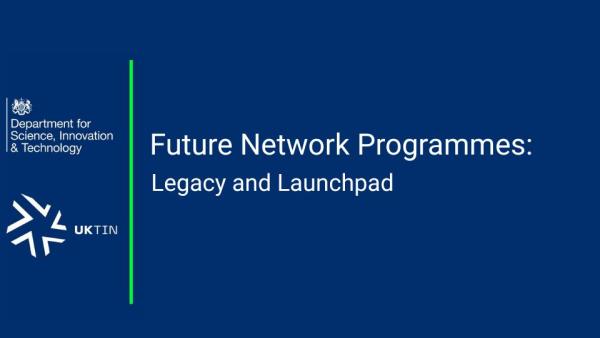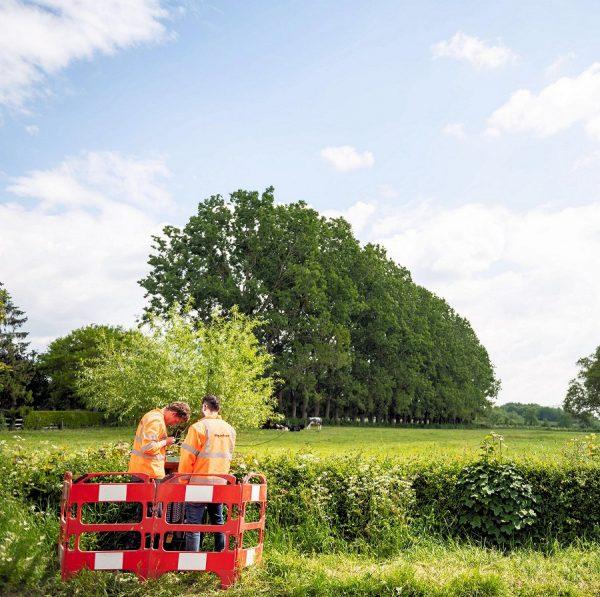
As the Future Network Programmes conclude, UKTIN is working with DSIT to reflect on the government-funded projects, outlining the key outcomes and the lessons learned to help improve future telecoms initiatives.
The UK’s transport sector keeps our country moving, yet there are concerns that our systems are not working as well as they should, particularly outside London. Improving infrastructure is a key focus for our government. By 2030, the UK intends for local public transport connectivity across the country to be significantly closer to the standards of London, with improved services, simpler fares and integrated ticketing.
ON-SIDE
Peel Ports Group in Liverpool is a hub for the UK’s container trade and a critical gateway for international shipping. With significant investments in infrastructure and technology, the Port of Liverpool stands at the forefront of the global logistics industry. The Glasgow-based ON-SIDE Project is deploying a private 5G network to tackle the port’s connectivity and communication challenges, in collaboration with Cisco, Intel and Logicalis.
This innovative network aims to support advanced use cases such as automation and remote crane operations, vessel monitoring, enhanced CCTV, and ubiquitous mobile connectivity for port staff, ensuring seamless operations and safety. Peel Ports Group’s commitment to efficient, sustainable logistics underscores the prestige of this collaboration and its significance for regional economic growth.
Looking ahead, Cisco intends to activate portable 5G systems across the UK and derive insights from live deployments.
Dez O’Connor, Cisco, said: “As an island nation, the UK has over 100 commercial ports responsible for 95% of all our imports and exports. They are critical drivers of local economies and the UK's economic standing. In a challenging economic climate therefore, digitising ports provides a significant opportunity to deliver real-world, tangible impact across the UK and it's why, when the ON-SIDE project was looking for real-world deployments to test the suitability of private 5G networks, we were so committed to partnering with Peel Ports. Our aim is not just to prove the value of digitisation, but that private 5G networks can be a suitable, scalable solution."The Borderlands 5G Innovation Region
The Borderlands is a large region – roughly 10% of the UK’s landmass – and with limited arterial routes, transport is a key issue. A low-carbon digital transformation is required to support the region’s visit economy, drive economic activity and facilitate access to emergency services, jobs, education, goods, services, social connections and healthcare.
The Borderlands 5GIR project is improving the resident and visitor experience by enhancing digital engagement while enabling local businesses, residents and visitors to fully leverage advanced wireless technology. This project is not just about connectivity, it’s about redefining how people move around one of the UK’s most historic and scenic regions.
The programme will support the Windermere Ferry crossing in Cumbria. The Mallard II, the latest vessel in a lineage going back to 1870, is an essential part of the Windermere area's local transport network but is also a major route for visitors seeking to explore the wider Lake District. 5G technology will support the ferry ticketing operation, enhance the passenger and commuter experience, and provide a monitoring system to support the running of the ferry and maintain the route in what is proven to be a challenging place in terms of the consistent provision of a transport service. These plans mark the beginning of a much larger ambition, reimagining mobility in one of the UK’s most scenic and historically rich regions, making travel smoother, more efficient and future-ready for residents and visitors alike.
Jonathan Harris, Programme Director for Connecting Cumbria said “By bringing advanced connectivity to rural transport, we are creating new opportunities for businesses, the local authority and end users to generate revenue, enhance the user experience and build long-term resilience of the transport network across the Borderlands. Designed for growth, the programme will continue expanding in the coming years, with its stackable use case approach and flexible contract model ensuring that the networks evolve in a commercially sustainable way.”
England's Connected Heartland
Made up of a consortium of ten local Authorities, England's Connected Heartland is deploying a 5G private network along the Bicester-Bletchley stretch of the East-West Rail train line. The programme will develop a modernised approach to offering gigabit-capable passenger connectivity onboard the train, enhancing the experience of this brand-new rail service and offering a foundation for future rail telecoms.
The project also intends to enable access to the network for its trackside neighbours. This will demonstrate how farming communities in particular can use connectivity to innovate and reduce digital exclusion across the region, offering residential and businesses fixed wireless broadband.
Lloyd Little, the programme's Transport Lead from Buckinghamshire Council said: "The project is extremely exciting, not only for our region but for rail travel across the UK. Frequent train users will know the challenges around passenger connectivity so being part of a project that will offer a solution to these, will be very rewarding. As a partnership, we are really passionate about how we can impact local communities so knowing that as we advance through the programme, residents and businesses across the region will reap the benefits too, will bring us a real sense of achievement."
Sunderland's 5G Innovation Region
The North East is harnessing the power of advanced wireless innovation to
transform transport and logistics, with cutting-edge projects revolutionising how
people and goods move across the region. Led by Sunderland City Council, such initiatives are paving the way for safer, more efficient and data-driven mobility solutions.Their 5GIR Connected Intelligent Transport Systems (C-ITS) project is leveraging
real-time data, AI and high-speed connectivity to enhance road safety, improve
multimodal journey planning and optimise traffic management. By integrating 5G with smart sensors and connected vehicle technology, the project is helping to reduce congestion and emissions whilst making travel more seamless and efficient.At the Port of Tyne, the 5GIR Smart Port project is deploying an extended private 5G network to support vehicle tracking, logistics optimisation and environmental
monitoring. This enhanced connectivity enables port operators to manage road conditions, vehicle movements and emissions, ensuring a safer and
more sustainable port environment.Barney Smith, Founder and CEO at Perform Green, said, “Through these initiatives, the North East is leading in digital infrastructure and demonstrating how 5G can deliver real-world benefits, from improving transport efficiency to reducing environmental impact. These projects are laying the foundation for smarter, greener mobility across the region and beyond. The projects are already delivering tangible benefits and driving a blueprint for connected, intelligent and sustainable communities of the future.”
The Belfast 5G Innovation Region
Belfast Harbour is harnessing 5G-powered digital technologies to accelerate port operations. IoT devices, sensors, infrared and 3D cameras are optimising bulk cargo operations and enabling the remote operation of a hopper to transfer bulk material, such as grain, from ships to trucks.
Ten port operations and Belfast Harbour Police vehicles have been fitted with equipment connecting them to public and private 5G networks. Staff have real-time access to business applications, digital information, and remote data downloads (including CCTV footage) while in their vehicle. Air quality sensors in the port area provide real-time, 24-7 environmental monitoring, data capture and analysis over a private 5G network giving Belfast Harbour access to actionable insights to improve air quality.
In addition, Belfast Harbour’s private 5G network has enabled its tenants to enhance their operations. Manfreight, a logistics company, uses connected cameras, machine learning, scanning and Push-to-Talk technology. 5G has enhanced its chilled distribution hub operations, optimising the movement and storage of lorries, trailers, and products across its warehouse facility.
Ferry company Stena Line transports over 500,000 freight units through Belfast Port for customers across the UK and Ireland each year. The business now uses connected cameras, Push-to-Talk and advanced tracking technologies to deliver more efficient operations at its freight trailer yard by optimising the movement of trailers to and from the ferry.
Laura O’Neill, Digital Transformation Manager at Belfast Harbour said: “We have successfully deployed a private 5G network in the main port thoroughfare, enabling Belfast Harbour and our tenants Stena Line and Manfreight to deliver a range of 5G use cases. Our 5G project supports Belfast Harbour’s strategic ambition to advance regional prosperity by developing and improving our port and enabling economic growth and innovation.”
Greater Manchester’s Smart Decarbonisation Network
The Greater Manchester Combined Authority (GMCA) and its partners are focusing on tackling the drivers of climate breakdown at a city region level, accelerating decarbonisation, improving quality of life, and growing the Green Technologies and Services sector.
Using 5G advanced wireless technology is central to this work, wrapped within an ecosystem delivered by industry and telecoms partners. The DSIT-funded Smart Decarbonisation Network Project supports a trial of a Digital Road Network Environment, which aims to reduce congestion and emissions by improving traffic flow and prioritising alternative travel methods like walking and cycling at traffic signals to enhance safety.









